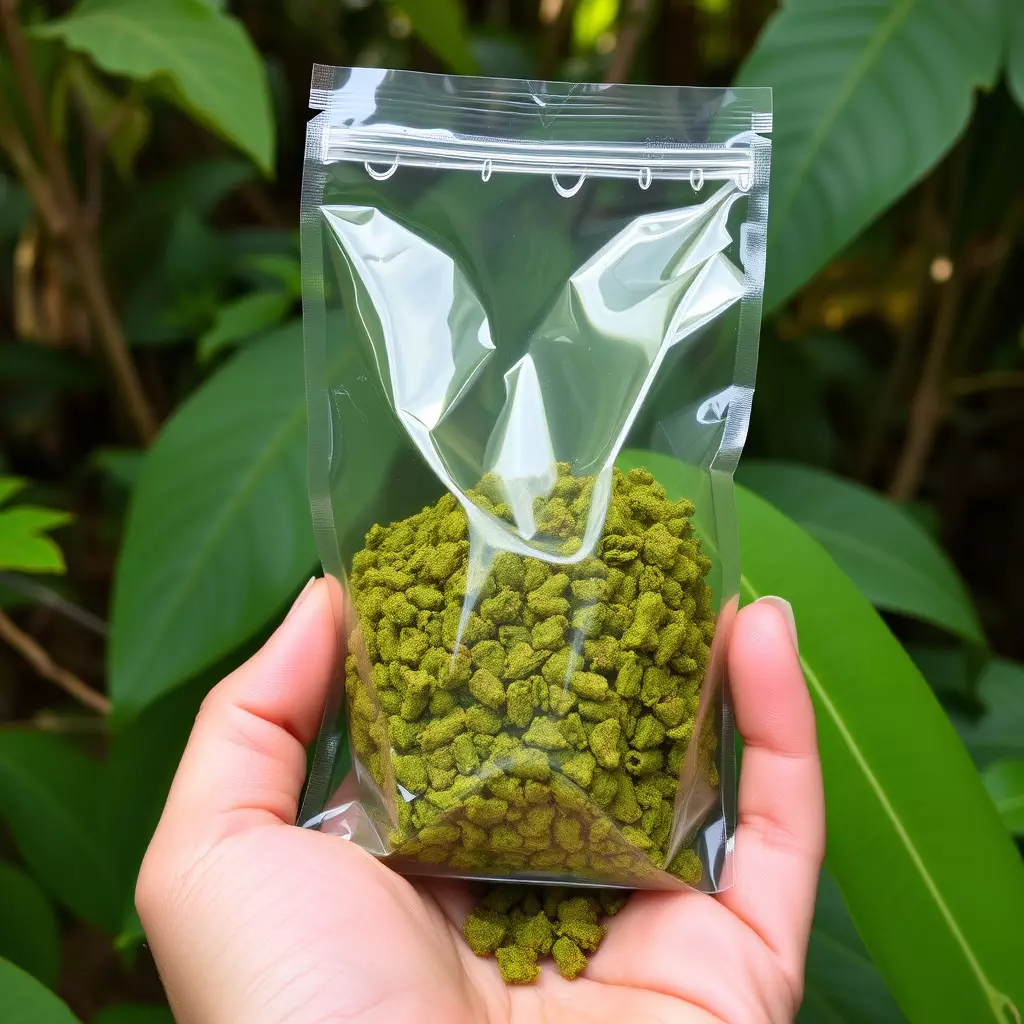Kratom, specifically its alkaloids mitragynine and 7-hydroxymitragynine, has been associated with promoting relaxation and aiding emotional regulation due to their interaction with the brain's opioid receptors. Strains like Bali and Maeng Da are noted for their calming effects. The anxiolytic properties of kratom may be attributed to its influence on neurotransmitters such as serotonin and dopamine, which contribute to mood regulation. While research suggests kratom could serve as a natural alternative to pharmaceuticals for managing anxiety and stress, it's crucial to use it with caution due to the variability in effects based on individual factors and tolerance. The legal status of kratom is subject to regional regulations, reflecting its psychoactive nature. Those interested in using kratom for emotional regulation as part of a wellness routine should seek informed advice to understand its benefits and risks, ensuring safe and responsible use. It's important to integrate kratom into a holistic health regimen that includes healthy lifestyle choices, rather than viewing it as a standalone solution, and to always prioritize professional medical guidance for comprehensive care.
Experiencing a state of deep relaxation and tranquility is increasingly sought after in our fast-paced world. This article delves into the potential of Kratom, a botanical substance, to aid emotional regulation and foster a sense of calmness. By exploring its anxiolytic properties and integrating it thoughtfully into daily wellness practices, individuals can effectively manage stress and cultivate a serene mindset. Join us as we uncover the role of Mitragyna Hyrida in promoting relaxation and the nuances of incorporating Kratom for enhanced emotional regulation.
- Unlocking the Anxiolytic Potential of Kratom for Enhanced Emotional Regulation
- The Role of Mitragyna Hyrida in Promoting Relaxation and Calmness
- Integrating Kratom into Your Wellness Routine for Stress Management and Tranquility
Unlocking the Anxiolytic Potential of Kratom for Enhanced Emotional Regulation

Kratom, a plant native to Southeast Asia, has garnered attention for its potential role in promoting relaxation and emotional regulation. The anxiolytic properties of kratom are attributed to its active alkaloids, mitragynine and 7-hydroxymitragynine, which interact with the brain’s opioid receptors. These interactions can lead to a modulation of stress responses and a reduction in anxiety levels, offering individuals an alternative approach to managing their emotional well-being. Users often report a sense of tranquility and improved mood after consuming kratom, particularly in strains like Bali or Maeng Da, which are known for their relaxing effects. The anxiolytic potential of kratom is not solely dependent on its psychoactive components; it also involves the modulation of neurotransmitters such as serotonin and dopamine, key players in the regulation of mood and emotional responses.
Research into kratom’s efficacy for emotional regulation is ongoing, with preliminary studies suggesting that it may offer a natural alternative to pharmaceuticals for those experiencing anxiety or stress-related conditions. However, it is crucial to approach the use of kratom with caution, as its effects can vary greatly depending on dosage, individual physiology, and tolerance. Moreover, the regulatory status of kratom differs across regions, with some countries considering it a controlled substance due to its psychoactive nature. Users interested in exploring kratom for emotional regulation should do so under informed guidance, ensuring they are aware of both the potential benefits and the possible risks associated with its use. Emotional regulation with kratom should be considered as part of a holistic approach to wellness, complementing other healthy practices rather than replacing professional medical advice or treatment.
The Role of Mitragyna Hyrida in Promoting Relaxation and Calmness

Mitragyna Hyrida, commonly known as kratom, has been recognized for its potential role in promoting relaxation and calmness, particularly through its influence on emotional regulation. Kratom contains a variety of alkaloids, including mitragynine and 7-hydroxymitragynine, which are believed to interact with the body’s opioid receptors and neurotransmitter systems. These interactions can lead to a modulation of mood and stress response. Users often report a sense of well-being and reduced anxiety after consuming kratom, suggesting its efficacy in emotional regulation. The plant’s effects are nuanced, with the right dosage potentially providing a soothing effect that helps alleviate feelings of nervousness or tension. It is important to note the context of use and the individual’s sensitivity, as personal tolerance levels can vary significantly.
Research into kratom’s mechanisms is ongoing, and while it holds promise for those seeking natural alternatives to manage stress and promote relaxation, its legal status and potential for misuse necessitate a cautious approach. Users should be informed about the proper dosing, potential side effects, and the importance of not substituting it for medical advice or treatment. As with any supplement or herb, consulting healthcare professionals is recommended to ensure safe and effective use of kratom in promoting emotional regulation and calmness.
Integrating Kratom into Your Wellness Routine for Stress Management and Tranquility

Kratom, derived from the leaves of the Mitragyna speciosa tree, has been recognized for its potential impact on emotional regulation and stress management. When integrated into a wellness routine, kratom may offer a supportive role in promoting relaxation and calmness. Its alkaloid profile, particularly mitragynine and 7-hydroxymitragynine, interacts with the body’s opioid receptors, which can influence mood and stress responses. Users often report feelings of well-being and a decrease in anxious thoughts, which are indicative of its potential benefits for emotional regulation. It is important to approach the use of kratom with caution, as dosage and strain selection play significant roles in its effects. Consulting with a healthcare provider before incorporating kratom into your wellness regimen is advisable to ensure safe and effective use, especially considering individual differences in response. By adhering to recommended guidelines and dosages, kratom can be a harmonious addition to one’s daily routine, contributing to a more tranquil state of mind and improved emotional balance.
For those seeking natural alternatives to manage stress, kratom may present a viable option when used responsibly as part of a comprehensive wellness strategy. It is crucial to maintain a holistic approach, combining kratom with other stress-reduction practices such as regular exercise, a balanced diet, and adequate sleep. Additionally, mindfulness techniques and stress management exercises can amplify the calming effects of kratom, fostering an environment conducive to emotional regulation and overall mental clarity. By incorporating kratom thoughtfully, individuals may find it aids in their journey towards achieving a more serene state of being and effective stress management.
Integrating Kratom into a wellness routine can be a promising approach for individuals seeking enhanced emotional regulation, particularly for managing stress and fostering a sense of calm. The anxiolytic potential of Kratom, specifically Mitragyna Hyrida, has been highlighted as a natural means to support relaxation without the adverse effects often associated with pharmaceutical options. By understanding its role and effects, individuals can make informed decisions about incorporating this botanical into their daily lives for improved stress management and tranquility. As with any wellness practice, it is advisable to consult healthcare professionals to ensure safe and effective use of Kratom in the context of emotional regulation and overall health and well-being.






